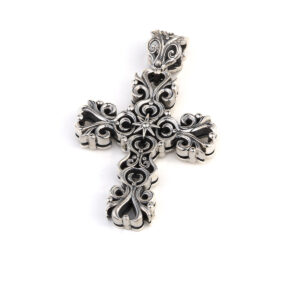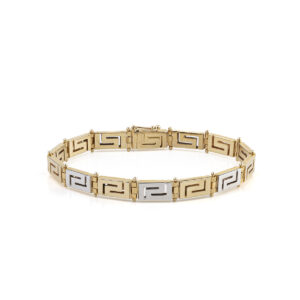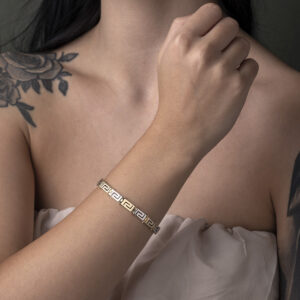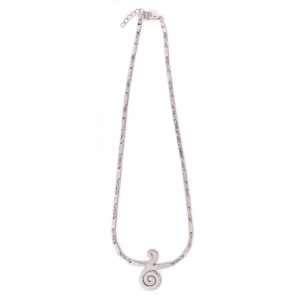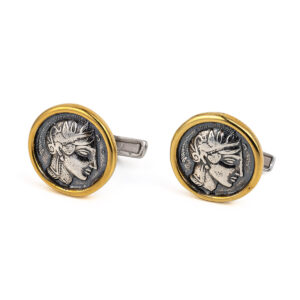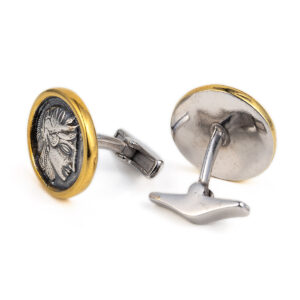Cross Pendant Odin – 925 Sterling Silver
Made of 925⁰ sterling silver
Handmade in Greece.
Silver creations of Yianni Jewelry, created by Garbis Khacherian, a silversmith trader since 1987.
Explore Yianni Jewellery
The chain shown is our Byzantine Orthodox Cross Pendant Silver 925 (not included)
Two Tone Greek Key Bracelet – 14K Gold
3.565,00€Made of 14K yellow gold
Handmade in Greece
Explore Meandros Collection
Meandros design is a decorative border constructed from a continuous line, shaped into a repeated motif. Such a design is also called the Greek fret or Greek key design, although these are modern designations. On the one hand, the name “meander” recalls the twisting and turning path of the Meander River in Asia Minor, and on the other hand, as Karl Kerenyi pointed out, “the meander is the figure of a labyrinth in linear form” the meaning is that there is no beginning and no end in some cases so it becomes the symbol of long life and eternity.
Blue Opal Spiral Necklace – 925 Sterling Silver
The spiral is one of the oldest symbols of human spirituality, carved or painted into rocks thousands of years ago. Symbol of movement and progressive development, growth, expansion, cosmic energy, symbol of the sun.. Spirals have been found in burial sites, in vases, in jewelry, clothing, weapons… They can be seen in every aspect of nature, like the tides in the oceans, the winds, the plants, and the shells. The spiral phenomenon has been explained through mathematics from the time of Archimedes, the great Greek mathematician.
Design inspired by Ancient Greece.
Made in 925⁰ sterling silver.
Handmade item.
Phaistos Disc Cufflinks – 925 Sterling Silver
This beautiful pair of cufflinks representing the disc of Phaistos.
The Phaistos Disc is a disk of fired clay from the Minoan palace of Phaistos on the island of Crete. Now, the island of Crete is part of modern Greece. The disc was discovered in 1908 by the Italian archaeologist Luigi Pernier in the Minoan palace-site of Phaistos. While it is not clear that it is a script, most attempted decipherments assume that it is; most additionally assume a syllabary, others an alphabet or logography or a calendar, making it one of the most famous mysteries of archaeology. The disk is about 15 cm in diameter and covered on both sides with a spiral of stamped symbols. The disc features 241 tokens, comprising 45 distinct signs, which were apparently made by pressing hieroglyphic “seals” into a disc of soft clay, in a clockwise sequence spiraling toward the center of the disk. This unique object is now on display at the archaeological museum of Heraklion.
Made of 925 sterling silver
Handmade item.
Greek Goddess Athena Cufflinks – Sterling Silver and Gold Plated
This coin is one of the most popular ancient Greek coins which illustrates the portrait of Goddess Athena.
Made in-house in 925⁰ sterling silver and gold plated.
Goddess Athena and Owl – Athenian silver tetradrachm
Dracma was the currency used in Greece during several periods in its history.
The tetradrachm was an Ancient Greek silver coin equivalent to fourdrachmae in Athens it replaced the earlier “heraldic” type of didrachms and it was in wide circulation from ca. 510 to ca. 38 BC.
This coin belongs to the so-called “new style Athenian coins” minted between 166 and 64 B.C. and is considered one of the most popular ancient Greek coins that illustrate the portrait of Goddess Athena. Athena is an ancient Greek goddess associated with wisdom, handicraft, and warfare.
Athena was regarded as the patron and protectress of various cities across Greece, particularly the city of Athens, from which she most likely received her name. She’s usually shown in art wearing a helmet and holding a spear. Her major symbols include owls, olive trees, and snakes. Her temples were located atop the fortified Acropolis in the central part of the city. The Parthenon on the Athenian Acropolis is dedicated to her, along with numerous other temples and monuments. Her main festival in Athens was the Panathenaia, which was celebrated in midsummer and was the most important festival on the Athenian calendar.
In the classical Olympian pantheon, Athena was regarded as the favorite daughter of Zeus.

